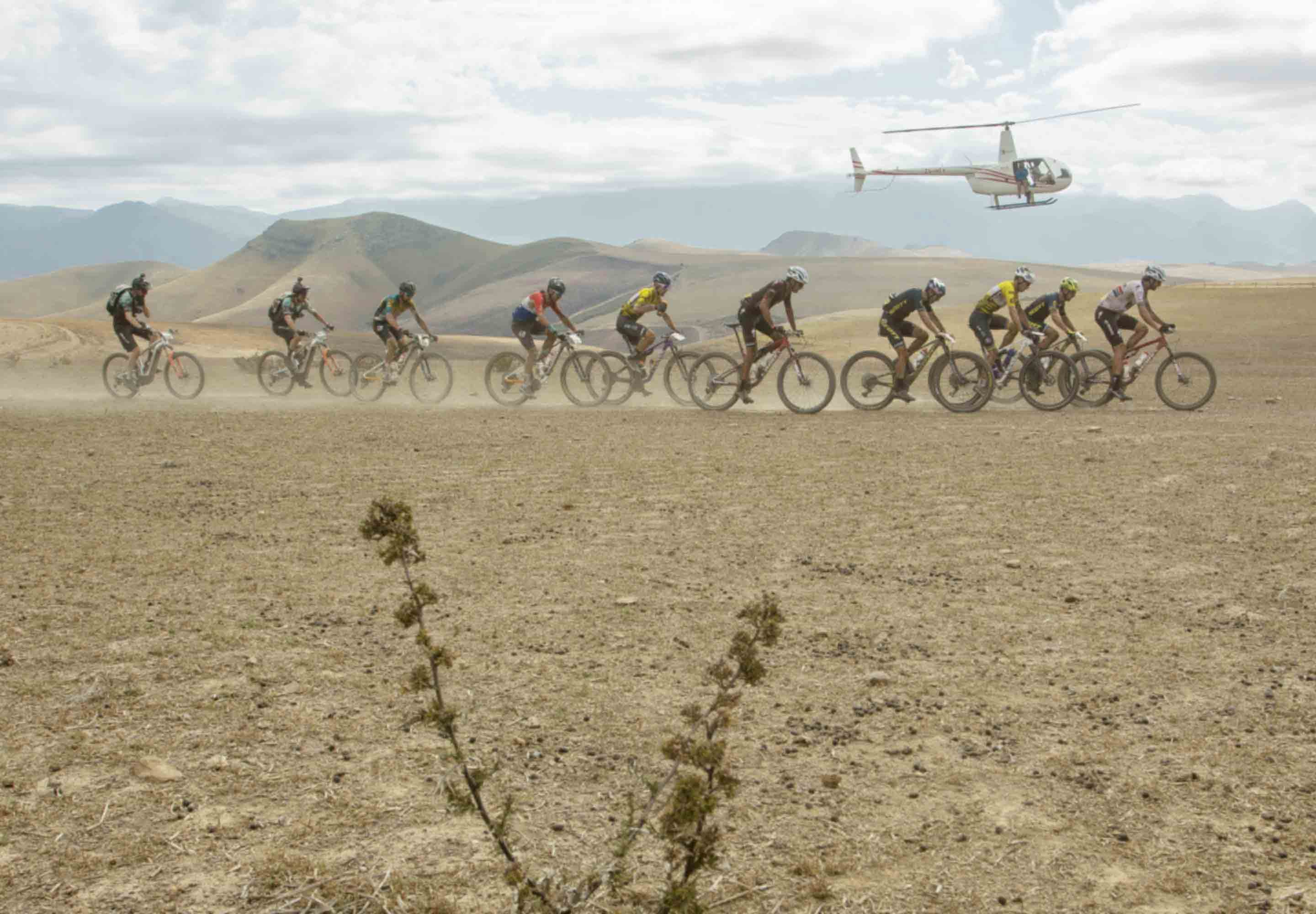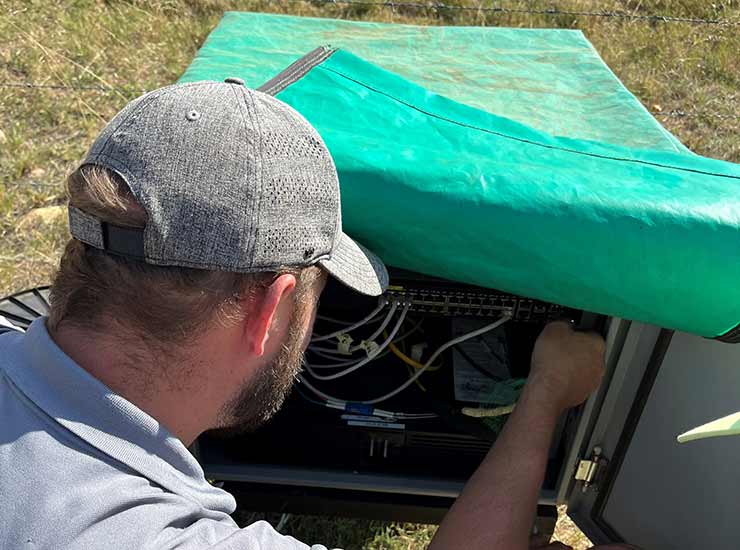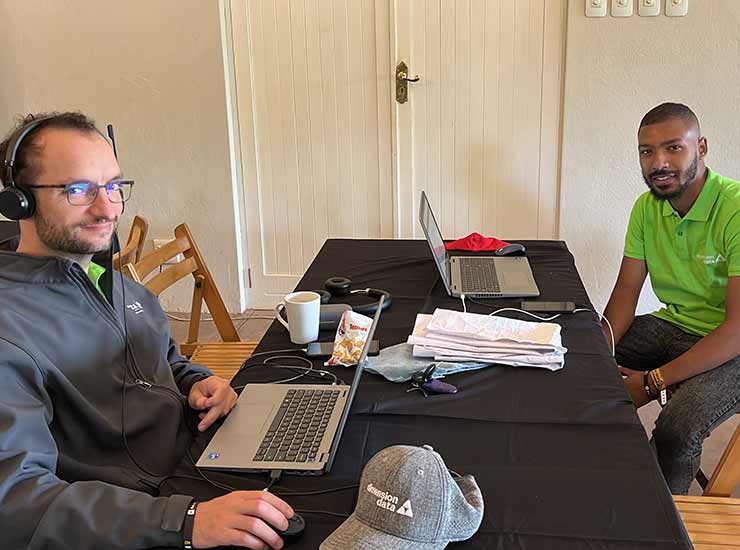-
Featured services
Harness innovation to deliver value
Ensure short-term stability as you design a roadmap for new use cases in your industry with emerging technologies.
Explore Connected Industries -
Services
View all services and productsLeverage our capabilities to accelerate your business transformation.
-
Services
Network as a Service
Popular Products
-
Private 5G
Our turnkey private 5G network enables custom-built solutions that are designed around unique use cases and strategies, and deployed, run and optimized through a full network-as-a-service model.
-
Managed Campus Networks
Our Managed Campus Networks services transform campus networks, corporate area networks and interconnected local area networks, and connect smart places and industries.
-
-
Services
Cloud Services
Popular Products
-
Cloud Migration and Transformation Services
Access the people, processes and technologies you need to deliver cloud migration projects that improve your return on investments.
-
Site Reliability Engineering Services
Get the most from your cloud investments when you harness our Site Reliability Engineering Services to support app development and lifecycle management.
-
-
Services
Edge as a Service
Client stories
-
Penske Entertainment and the NTT INDYCAR SERIES
Together with Penske Entertainment, we’re delivering digital innovations for their businesses – including INDYCAR, the sanctioning body of the NTT INDYCAR SERIES – and venues such as the iconic Indianapolis Motor Speedway, home to the Indianapolis 500.
-
Using private wireless networks to power IoT environments with Schneider Electric
Our combined capabilities enable a secure, end-to-end digital on-premises platform that supports different industries with the benefits of private 5G.
-
-
Services
Technology Solutions
Client stories
-
Services
Global Data Centers
-
Services
Digital Collaboration and CX

IDC MarketScape: Worldwide Datacenter Services 2023 Vendor Assessment
We provide a new kind of intelligent infrastructure to deliver better outcomes through technology.
Get the IDC MarketScape -
-
-
Insights
Recent Insights
-
The Future of Networking in 2025 and Beyond
-
Using the cloud to cut costs needs the right approach
When organizations focus on transformation, a move to the cloud can deliver cost savings – but they often need expert advice to help them along their journey
-
Make zero trust security work for your organization
Make zero trust security work for your organization across hybrid work environments.
-
-

Copilot for Microsoft 365
Everyone can work smarter with a powerful AI tool for everyday work.
Explore Copilot today -
-
Global Employee Experience Trends Report
Excel in EX with research based on interviews with over 1,400 decision-makers across the globe.
Get the EX report -
Discover how we accelerate your business transformation
-
About us
CLIENT STORIES
-
Liantis
Over time, Liantis – an established HR company in Belgium – had built up data islands and isolated solutions as part of their legacy system.
-
Randstad
We ensured that Randstad’s migration to Genesys Cloud CX had no impact on availability, ensuring an exceptional user experience for clients and talent.
-
-
CLIENT STORIES
-
Liantis
Over time, Liantis – an established HR company in Belgium – had built up data islands and isolated solutions as part of their legacy system.
-
Randstad
We ensured that Randstad’s migration to Genesys Cloud CX had no impact on availability, ensuring an exceptional user experience for clients and talent.
-
-
CLIENT STORIES
-
Liantis
Over time, Liantis – an established HR company in Belgium – had built up data islands and isolated solutions as part of their legacy system.
-
Randstad
We ensured that Randstad’s migration to Genesys Cloud CX had no impact on availability, ensuring an exceptional user experience for clients and talent.
-

NTT DATA and HEINEKEN
HEINEKEN revolutionizes employee experience and collaboration with a hybrid workplace model.
Read the HEINEKEN story -
- Careers
Topics in this article
NOTE: This blog was originally published on the Dimension Data website. Dimension Data rebranded as NTT DATA in 2024.
A clear head and a calm mindset are vital to keeping the world’s premier mountain-bike stage race connected to the world. On any given day, you could be dealing with network downtime interrupting the live feed of the race, or a kitchen worker plugging a toaster into the wrong outlet and tripping a network-related circuit breaker.
The Absa Cape Epic, taking place this year from 19 to 26 March, is the only eight-day mountain-bike stage race classified as hors catégorie (beyond categorization) by Union Cycliste Internationale, the world governing body – making it a highlight for both professional and amateur racers from around the globe.
The route through South Africa’s Western Cape province changes every year, taking bikers along roughly 700km of varied terrain with about 17km of climbing.
Connectivity can be a life-saver
Dimension Data has been the event’s Official Technology Partner since 2015. We provide the connectivity that makes it possible to livestream the race from ebikes, motorbikes and helicopters, and which gives riders, officials and supporters internet access in the race “villages” along the route.
Apart from allowing the bikers to connect with their friends, fans and families, the connectivity we provide is essential for the medical team in case of emergencies, for example, or to support real-time streaming and media commentators reporting from anywhere along the course.
So, our solution needs to have plenty of bandwidth, be stable enough to survive any weather conditions, and secure racers’ personal information and other event data.
How do we do it?
From the testing center to the epicenter
Our technical planning starts about seven months before the wheels hit the dirt the following March. We discuss the requirements for the next Absa Cape Epic with the race organizers, study site maps to plan our infrastructure design, and line up our suppliers and service providers.
Come January, we’ve assigned the core Dimension Data team of about 10 project managers and engineers. Then we go to our Cape Town-based test lab to test our planned functionality and connectivity, and to build some of the structural elements such as outdoor access points. We have a network core there that weighs a ton and produces some colorful phrases from the engineers, but it works!
All network equipment on site is tested and monitored continually
We prepare two full sets of equipment: one that provides live connectivity to the current race village (where the riders are arriving on the day) and one for the next village (where we’re setting up simultaneously for the next day, so it will be live once the action moves there). These sets include:
- About 3.5km of single-mode fiber per village, installed in a ring topology around the village
- A total of roughly 4.5km of copper wire for devices such as access points, digital screens, servers, routers, wireless LAN controllers and firewalls
- Up to 14 cabinets spread around the village, each with an uninterruptible power supply and switch
- Back-ups for all possible central points of failure such as switches and firewalls
We use a ring topology to safeguard our connectivity because it creates a reliable backbone. A truck once took down our aerial fiber connection when the driver used the wrong exit from a race village, but we avoided downtime because we could reroute the data along a redundant path until our engineers could repair the broken fiber.
Our data center – the epicenter of our work – is usually located close to the media center. It houses the core switch, servers, routers and other devices running our applications.
Dimension Data has committed to sustainability goals, so the fiber we deploy is packed up, repaired, tested and reused. Only when the damage is irreparable will it be replaced altogether. Some copper cabling will
be damaged beyond use when the sites are dismantled, but whatever we can reuse, we will.
Guarding against the dreaded downtime
Downtime, especially during the race, is our biggest fear. It would affect everything from the livestream to the broader support system of organizers and medics, so we’re especially vigilant then.
We have two internet connections to the world. The primary connection comprises a last-mile fiber connection with international bandwidth of 300Mbps, while the secondary link is a radio connection with international bandwidth of at least 200Mbps.
Some race locations don’t even have cell reception, so our internet links are the only mode of communication there. We route priority data over the primary link. Should it fail, all data will automatically switch to the secondary connection, which already hosts noncritical data.
The bandwidth itself is also allocated to make sure that priority users such as medics or broadcast journalists can communicate as fast and efficiently as they need. Other user groups, such as guest users, have a different allocation on our secondary connection.
To install and test the lines in advance, we also work closely with the service providers for the two internet links. One of their on-site experts has even become our champion in the technical team’s annual arm-wrestling competition against the media contingent!
New technology for better visibility and control
This year, we’ll be using Cisco’s ThousandEyes to get full visibility of the wide-area network, our applications in the cloud, and the routes we take to get to these applications. It uses active and passive monitoring to give us insight into the user experience across applications and services – and, importantly for the race environment, it detects internet outages in real time.
Members of the Dimension Data technical team on site during the Absa Cape Epic
A team that’s prepared for anything
Keeping the race sites linked to the world is our biggest challenge, but we have to be ready for anything. Someone will come up and ask: “I've got this piece of technology, and I need to plug it into the network. How do I do it?” Then we have to think on our feet.
For example, a few years ago, a postproduction team wanted to upload huge files to Germany, but our international bandwidth was slowing it down. One of our engineers devised a way for them to use Google Drive to get the files there on time.
Most members of our Absa Cape Epic technical team have been there from the start, and they’re a special bunch of people. When they need to knuckle down – whether it’s prepping the equipment, doing configurations or keeping it all live – they make magic. This year, I'll be working alongside James Cook, Arnót Terblanché, Kevin Adams, Shanenin Herbert, Siyathemba Jilaji, Shannon Cranko, Adriaan Engelbrecht, Jéan Höll and Mannes Nijeboer.
So, when you’re cheering on the champion riders on their mountain bikes, spare a thought for the technicians who also play a big part in making the race run smoothly and safely.
Read more about how Dimension Data connects the Absa Cape Epic to the world.
Mike Lewis is Senior Solutions Architect at Dimension Data. This article includes contributions by James Cook, Senior Client Project Manager at Dimension Data.



